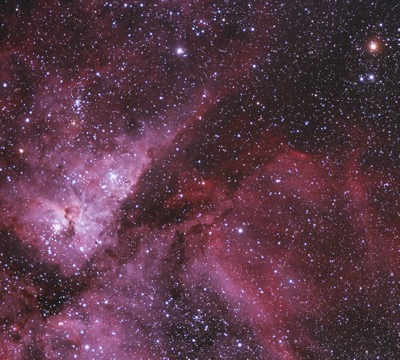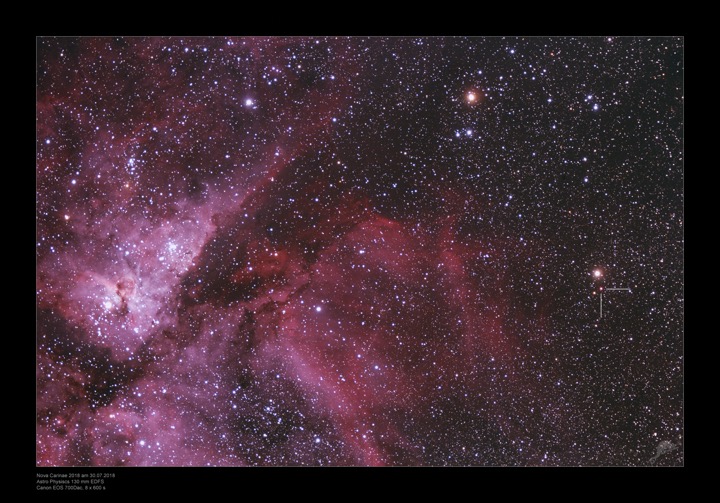
14 Apr SALT contributes to a new understanding of novae

Photograph of Nova V906 Carinae taken at the Onjala observatory in Namibia. The nova is the star to which the two faint lines are pointing. Credits: W. Paech & F. Hofmann, Chamaeleon and Onjala Observatory, Namibia).
An international team of researchers, led by Dr Elias Aydi, a former SAAO and University of Cape Town PhD Student, now at Michigan State University (MSU), have discovered a new cause for the incredible brightness observed when a star explodes. The discovery used high-resolution optical spectroscopy from different telescopes including SALT to better understand the stellar explosion or nova.
A nova is an explosion on the surface of a star that can produce enough energy to increase the star’s brightness by millions of times. Sometimes a nova, which occurs in stars called white dwarfs, is so bright it appears as a new star to the naked eye. A white dwarf star strips material from its companion star that piles up on the dwarf’s surface, eventually triggering a thermonuclear explosion.
While for many years astronomers have thought that nuclear burning of material on the surface of the white dwarf directly powered all the light from the explosion, more recently astronomers started debating that “shocks” from the explosion might power most of the brightness.
The research is detailed in a paper published in the journal Nature Astronomy titled “Direct evidence for shock-powered optical emission in a nova.”
“This is a new way of understanding the origin of the brightness of novae and other stellar explosions,” said Elias Aydi, a research associate in MSU’s Department of Physics and Astronomy, who led an international team of astronomers from 40 institutes, across 17 countries. “Our findings present the first direct observational evidence, from unprecedented space observations, that shocks play a major role in powering these events.”
The SALT observations were taken under the transient follow-up programme, with Dr David Buckley at SAAO being the Principal Investigator. Nova became an important class targeted by the programme since 2016, led by Dr Aydi, who was a graduate student at the time. It now involves a number of different co-investigators from 3 of the SALT partners (South Africa, USA and Poland) plus many other international collaborators.
More details can be found in the MSU press release, which this article has been adapted from.

